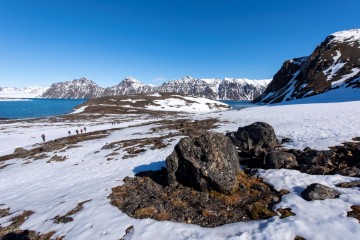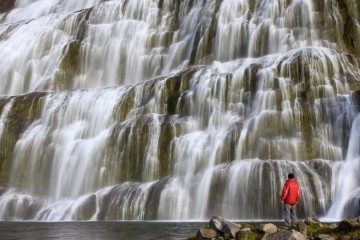Complete East Greenland
Tour Overview
Voyage to one of the wildest and remote regions in the world, the breathtaking coasts of East Greenland. Experience the region's beauty and diversity on this unique voyage combining the best of East Greenland.
Wild. Rugged. Remote. Pristine. Words which describe, but fail to capture the majesty of one of the wildest regions on planet Earth.
The flickering aurora borealis, vast glaciers, precipitous mountains and charismatic Arctic wildlife are just some of the spectacles we hope to see on the wild shores of Earth's largest island. Experience Tunumiit culture and incredible history in Ammassalik region, meet the locals in Greenland's most isolated community in Scoresbysund, and experience the unrivalled majesty of the Northeast Greenland National Park - the largest in the world.
Beginning from the Icelandic capital of Reykjavík, this unique itinerary combines three regions of East Greenland into one thrilling voyage. Crossing the Denmark Strait, we arrive in Ammassalik region, where we will visit the city of Tasiilaq, capital of East Greenlandic culture and tradition, before exploring the historical sites, villages and staggering natural beauty of the region. From Ammassalik, we will head to the settlement of Ittoqqortoormiit in the vast fjord sysem of Scoresbysund, where visitors can experience the unique traditions and customs of the Inuit pioneers who made this region their home.
Leaving Scoresbysund behind, we will set a course for the North East Greenland National Park. This is the largest protected area of land on Earth, and holds no permanent residents, save wildlife such as the muskoxen grazing on the tundra and the beluga frolicking in the icy fjords. Surrounded by breathtaking scenery, we will come ashore at remote landing sites, explore vast glaciers on our fleet of Zodiacs, and if we're lucky, experience the majesty of the northern lights in pristine wilderness.
Blending Inuit culture, mind-boggling natural beauty and the chance to see some of the Arctic's most charismatic wildlife, this voyage showcases the best of the Arctic's largest wilderness.
Viva's Best Bits...
Visit and discover the extremely isolated Inuit town of Ittoqqortoormiit which is home to around 500 people.
Explore the Northeast Greenland National Park, the largest national park and largest protected land area. Look out for wildlife including polar bears, muskoxen, and whales
If you are lucky, witness a stunning display of the Northern Lights, also known as the Aurora Borealis while cruising.



